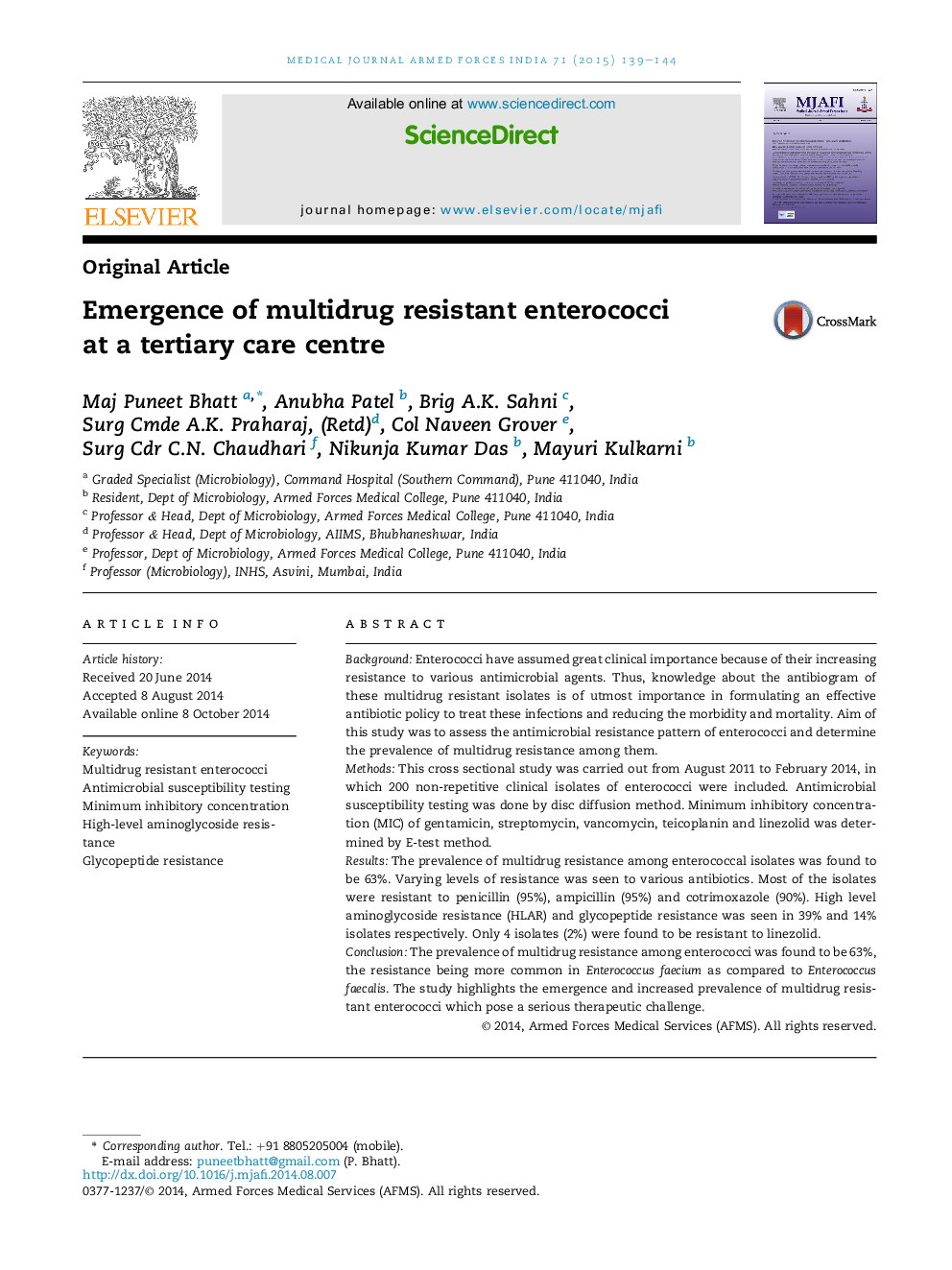| Article ID | Journal | Published Year | Pages | File Type |
|---|---|---|---|---|
| 3160974 | Medical Journal Armed Forces India | 2015 | 6 Pages |
BackgroundEnterococci have assumed great clinical importance because of their increasing resistance to various antimicrobial agents. Thus, knowledge about the antibiogram of these multidrug resistant isolates is of utmost importance in formulating an effective antibiotic policy to treat these infections and reducing the morbidity and mortality. Aim of this study was to assess the antimicrobial resistance pattern of enterococci and determine the prevalence of multidrug resistance among them.MethodsThis cross sectional study was carried out from August 2011 to February 2014, in which 200 non-repetitive clinical isolates of enterococci were included. Antimicrobial susceptibility testing was done by disc diffusion method. Minimum inhibitory concentration (MIC) of gentamicin, streptomycin, vancomycin, teicoplanin and linezolid was determined by E-test method.ResultsThe prevalence of multidrug resistance among enterococcal isolates was found to be 63%. Varying levels of resistance was seen to various antibiotics. Most of the isolates were resistant to penicillin (95%), ampicillin (95%) and cotrimoxazole (90%). High level aminoglycoside resistance (HLAR) and glycopeptide resistance was seen in 39% and 14% isolates respectively. Only 4 isolates (2%) were found to be resistant to linezolid.ConclusionThe prevalence of multidrug resistance among enterococci was found to be 63%, the resistance being more common in Enterococcus faecium as compared to Enterococcus faecalis. The study highlights the emergence and increased prevalence of multidrug resistant enterococci which pose a serious therapeutic challenge.
